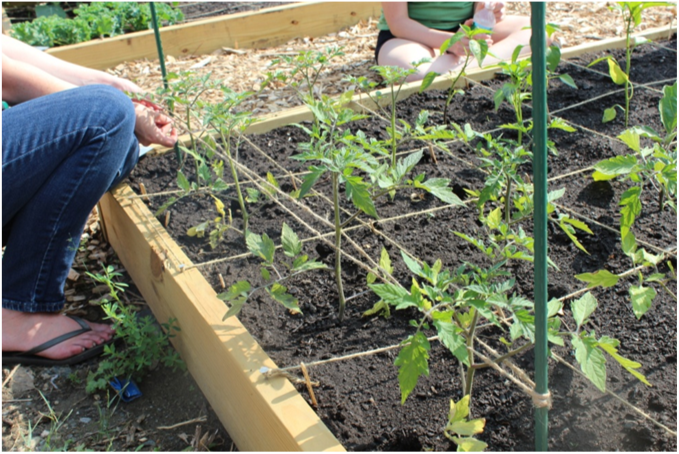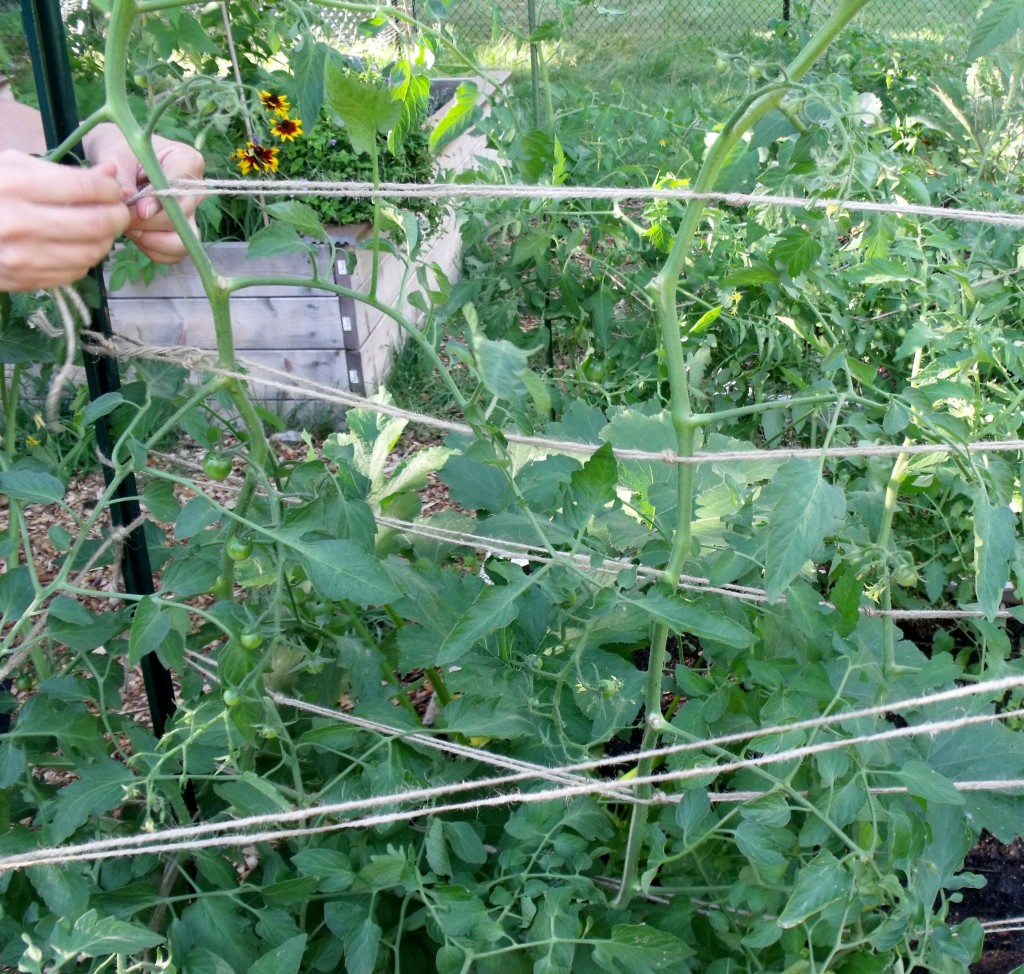“There are no failures in gardening, only experiments.”
It’s so true, isn’t it? The garden is such a wonderful place to try something new and, when it doesn’t quite go as planned, revise and try again next year. In a community garden, as all our Teaching Gardens are, we even have the benefit of seeing others’ experiments and incorporating their results into our plans.
In our Teaching Gardens, we’re in the middle of a tomato experiment right this minute that were certainly planning to adjust for next season.
Did you see our earlier blog post or our FB post about the Florida weave method for staking tomatoes? It went like this….
“Place a stake at either end of a row of tomatoes and string twine from stake to stake, weaving in front and behind each plant. As the plants grow, work your way up the stakes with additional rows of twine, spaced about 6” apart or as needed. Easy!”

Ah, well, easy in theory.
The difficulty became apparent fairly early on. As our vines grew and began to produce weighty, mouth-watering tomatoes, we saw the stakes begin to sag toward the middle, born down by the heft of the four tomato plants between them. In our Clinton garden in particular, where the ground beneath our raised beds is extremely compacted, the stakes were difficult to press far enough into the ground for good stability.
We’d opted for the metal stakes because they don’t harbor blight year to year as wooden stakes can, and we thought they’d last a bit longer. Sadly, they simply aren’t strong enough to support the tomatoes effectively, which outweighs any disease-resistance or lifespan benefits.
At this point in the season, how can we keep the tomatoes off the ground where they’re at risk of rotting?
Option 1: Individually stake the plants. We’ve done this in a few plots in Clinton where it’s been clear no other option would adequately support the vines and their fruit. It’s a bit tricky at this stage to disentangle the vines from the existing weave of twine, but worth it for the end result.
Option 2: Tie the end two tomatoes directly to the stakes, leaving only the two center tomatoes resting on the twine. This has been just enough added support in some cases that we think it will suffice for the next couple months.
Our second, complicating issue is that the vines wobble and fall to the sides even if the stakes don’t sag. Lucky for us, we’ve a genius Teaching Gardener among us (Thanks, Jenn!) who came up with this brilliant solution: knots! As she strings a row of twine, she identifies which way each vine is leaning and ties a stabilizing knot to hold the vine in place. So clever!

Next year, we’re planning the following revisions for our tomatoes:
1) Stake with sturdier metal stakes (like in the second photo, above), pounded further into the ground to support the full weight of the fruits. With these stakes, the weave will still work, but will be much more effective with the added use of Jenn’s genius knots.
2) Alternatively, for anyone who finds the weave a bit too complicated for their liking, we’ll offer single stakes for each plant and tie directly to the stake.
We also wanted to point out how well suckering (pruning off the shoots in the branch joints) can work when done consistently. Check out this tomato plant! Kept to a single vine, the plant is demonstrating all of the key benefits of suckering we mentioned earlier this year: early production, larger, healthier fruit, and disease prevention. Nice work, Maria!

So on the balance, we figure having beautifully pruned plants that produce too much heavy fruit for our stakes to support isn’t the worst result we could have in our tomato experiment. Wouldn’t you agree? Next season, we’ll still have plenty of improvements to make and hope for an even more impressive harvest!
